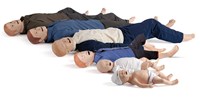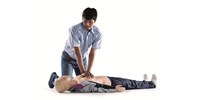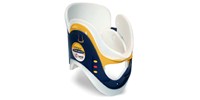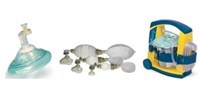Oregon Health and Science University
| Center: | Oregon Health and Science University | |
| Contact: | Michael Seropian, Title: Medical Director of Simulation | |
| Address: |
3181 Sam Jackson Park Road Mail code: BTE-2 Portland, OR 97239 |
|
| Email: | [email protected] | |
| Phone: | 503-418-5684 | |
| Website: | www.ohsu.edu/simulate | |
| Mission: |
Provide outstanding leadership, access and training opportunities in simulation for Oregon healthcare providers in the community of undergraduate students, graduate residents and fellows, graduate level nursing students, hospital-based patient care services and practicing and research faculty. Provide national leadership in the implementation of simulation education and the development of simulation technology. |
|
| Learner Population: |
Schools: Nursing – Undergraduate and graduate Medicine - Undergraduate and graduate Dentistry PA
Hospital: Nursing and Clinics Multiple medical/surgical departments
Our learner population is broad and we have high utilization of simulation with an average of over 29,000 simulation exposures annually across the institution. The highest utilization is in nursing, with full integration of simulation in their student population. Because of our physical location we have adopted a distributive model leveraging four simulation sites/facilities on our Portland campus. We have four satellite nursing sites, and are active users of in-situ simulation. |
|
| Program Goals: |
Varied |
|
| How do you use simulation to achieve your goals? |
Dynamically and with constant forethought. |
|
| Major Accomplishments/ Publications |
Our faculty has been very active nationally and internationally.
Some highlights include: • OHSU was a primary leader in the formation of the first and most comprehensive statewide simulation alliance – The Oregon Simulation Alliance (OSA)
Some publications include: 1. Seropian, M, Dillman D, Lasater K, Gavilanes G. Manikin-based simulation to reinforce pharmacology concepts - Where theory meets practice. Journal of the Society for Simulation in Healthcare. 2(3); Dec 2007 2. Lasater, K. High fidelity simulation and the development of clinical judgment: Student experiences. Journal of Nursing Education. 2008 3. Seropian, M, Dillman D. Statewide Simulation – It can be done. Anesthesia Clinics of North America.25(2), Jun 2007 4. Lasater, K. (2005). The impact of high fidelity simulation on the development of clinical judgment in nursing: An exploratory study. (Doctoral dissertation, Portland State University). Dissertation Abstracts International, 66, 1396. 5. Lasater, K. (2007). High fidelity simulation and the development of clinical judgment: Student experiences. Journal of Nursing Education, 46, 269-276. 6. Seropian, M., Brown, K., Gavilanes, J., Driggers, B. Simulation – Not Just a Manikin. Journal of Nursing Education. April 2004, 43,(4): 164-169. 7. Seropian, M., Brown, K., Gavilanes, J., Driggers, B. An Approach to Simulation Program Development. Journal of Nursing Education. April 2004, 43,(4):170-174. 8. Lasater, K.L. (2007). Clinical judgment development: Using simulation to create an assessment rubric. Journal of Nursing Education, 46, 496-503. 9. Seropian, M, Driggers, B, Taylor, J, Gubrud-Howe, J, Brady, G. The Oregon Simulation Experience: A Statewide Simulation Network and Alliance. Simulation in Healthcare: Journal of the Society for Simulation in Healthcare; 1(2); March 2006 10. Seropian, M. General Concepts in Full Scale Simulation: Getting Started. Anesthesia and Analgesia 2003;97:1695-1705.
Chapters: 1. Seropian M, Driggers B. Statewide Simulation and Large scale simulation implementation. Clinical Simulation: Operations, Engineering, and Management. Elsevier. 1st ed. Burlington, MA. Pages 345 - 355 2. Seropian M. Facility design 101 – The basics. Clinical Simulation: Operations, Engineering, and Management. Elsevier. 1st ed. Burlington, MA. Pages 177-185 3. Goodrow M, Seropian M, Benken B, Huang J. Professional Audio-visual. Clinical Simulation: Operations, Engineering, and Management. Elsevier. 1st ed. Burlington, MA. Pages 713-729 4. Lasater, K., & Gavilanes, J. (2008). Simulation. In Billings, D. (rev.), New technology in nursing staff development: Choosing, justifying and implementing nontraditional teaching methods (pp. 85-116). Marblehead, MA: HCPro, Inc.
Books: Real Nursing Simulations. Facilitators Guide. Seropian M, Driggers B, Gubrud-Howe P, Cato M, Gavilanes J, Peeples A. Pearson. 1st edition. New Jersey. 2008
NLN modules: Mary Cato MSN, RN – • NLN Simulation Innovation Resource Center (SIRC) expert author. |
|
| Areas of Interest: |
Program development Integrated approach to simulation Simulation collaboratives Facility design Product development Helping others accomplish a high level of simulation success! |
|

 USA
USA





